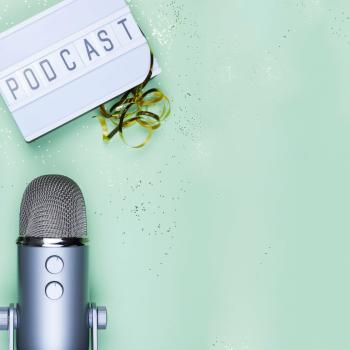Teaching With Podcasts

About this Strategy Guide
This Strategy Guide describes the processes involved in composing and producing audio files that are published online as podcasts.
Research Basis
Podcasts are serial recordings, posted regularly online. Robert Rozema describes a podcast as "a blog in audio form" (31). Basically, producing podcasts is the technology-based equivalent of oral storytelling. Much as oral stories and news have been shared with listeners by medieval bards, Native American storytellers, and others, podcasters share news and stories with their listeners, who download the files online.
Podcasts can be used for any purpose a text might serve-they can tell fictional stories, share and comment on recent events, inform listeners about a topic, and persuade listeners to take an action or adopt a stance. As a result, podcasts are valuable tools for teaching students to use spoken language to communicate effectively with a variety of audiences and for different purposes.
Strategy in Practice
Students can produce podcasts that fit any genre, including audio diary entries, analytical commentary on readings or current events, informational recordings that explain concepts, and persuasive and argumentative statements.
- Review your district's appropriate use policies to determine the requirements for a podcasting site that students can use. Remember that anyone can post to most of the public podcast sites. Some material on them will be inappropriate for your classes. Some schools filter these sites, so you may need to speak with your technology coordinator ahead of time to get approval.
- Make sure that all students have e-mail accounts, which are needed to set up accounts with podcasting sites.
- Choose and test a podcasting site for your class. You can publish podcasts using iTunes or you can use a blogging site, like Blogger, which allows you to upload audio files. You can also upload audio files using most course management software, like Blackboard, Ning, or Moodle.
- Pick out some podcasts for students to listen to before producing their own. You can search through the educational podcasts on a site like iTunes; or you might select something from the list of Podcasts Suitable for Educators, Schools and Colleges.
- Decide on the kinds of podcasts that students will produce. Have students choose a theme for their production and then brainstorm several possible episodes.
- Review the Audio Dramatization Process with students, and discuss how the process can be customized to fit the specific podcasts students will produce.
- Have students gather notes and create scripts for their podcast episodes. Students can use any writing resources appropriate for their work. For instance, students creating arguments for or against a local issue in the news can use the Persuasion Map to gather and organize their ideas.
- Gather audio recording equipment-a computer with audio recording software and a microphone, or a digital audio recorder with a microphone. Many cell phones can also record audio files.
- Have students record their podcasts using the available equipment. It's usually best to record in short sections so that mistakes are easier to fix. Once the scripts have been recorded, transfer the files to the computer so that students can edit them and post them online.
- Have students edit their recordings using software like GarageBand for Macintosh or Audacity for Windows. Discuss music and sound effects that students can use as background sounds for their productions and the importance of respecting copyright restrictions. Encourage students to use podsafe music, which is specifically designed to be distributed freely online. Creative Commons and FreeSound are possible starting points.
- Post the finished podcasts online, using the instructions on the site you've chosen.